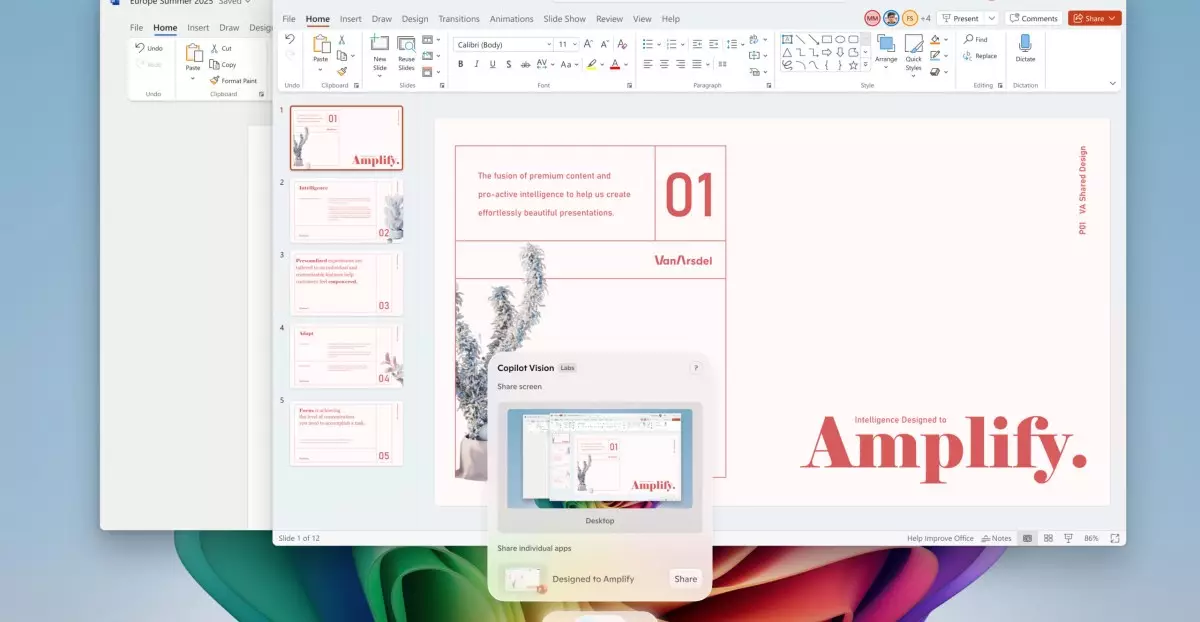In recent developments, Microsoft is aggressively transforming Windows 11 from a traditional operating system into a powerhouse of artificial intelligence. The unveiling of its extensive suite of AI-driven features signifies not just an upgrade, but a fundamental shift in how users interact with their devices. This evolution empowers users to perform tasks more intuitively and efficiently, challenging previous notions of desktop computing limitations. The company’s bold move towards integrating AI deeply into the OS marks a significant leap toward a smarter, more responsive digital environment that prioritizes user convenience and productivity.
Empowering Users with Seamless Screen Interaction
At the heart of these innovations lies the much-anticipated Copilot Vision, a tool that uses AI to scan and analyze everything visible on your screen. Unlike conventional assistants confined to voice commands or limited task searches, Copilot Vision offers a holistic understanding of your ongoing activities by examining multiple open apps and webpages simultaneously. This capability means that users can ask complex, context-aware questions—such as “What is this photo’s lighting issue?”—and receive tailored advice in real-time. This feature not only enhances efficiency but also reduces the cognitive load for users, allowing them to focus on their creative or professional pursuits without getting bogged down by technical hurdles.
What is particularly remarkable is how Microsoft is democratizing these capabilities. While initially tested in limited formats, the rollout now makes AI-powered screen analysis accessible to all Windows 11 users, heralding a new era of intelligent assistance that transcends traditional boundaries. This underscores a shift from reactive to proactive computing, where the OS anticipates user needs and offers solutions before they become obstacles.
AI as a Personal Assistant and Task Automator
Beyond visual analysis, Microsoft’s enhancements extend into natural language-powered controls within the Settings app, exclusive to Snapdragon-powered Copilot Plus devices. This means users can ask the computer to perform tasks like enabling quiet hours or connecting Bluetooth devices simply by speaking or typing a command. The integration of AI into system configuration represents a significant step forward from manual, often cumbersome, settings adjustments. It transforms the PC from a tool that needs to be navigated into a collaborative partner that understands and anticipates user intentions.
Additionally, the “Click to Do” feature exemplifies a shift towards contextual and task-specific AI assistance. By right-clicking on content, users can invoke a wave of intelligent actions—be it summarizing text, practicing language skills with Reading Coach, or even scheduling meetings via Microsoft Teams. These tools do not just save time; they redefine efficiency. They turn the operating system into an active co-creator, simplifying complex workflows and making professional and creative tasks more accessible than ever.
Expanding Creative and Visual Capabilities with AI
Microsoft is also pushing the boundaries of creativity with AI-infused features in applications like Paint and Photos, limited to Snapdragon-powered devices. For example, the sticker generator in Paint liberates users to craft personalized visuals effortlessly, while the object select tool in Paint enables precise editing of specific image segments. These innovations not only enhance creative freedom but also bring sophisticated editing capabilities to everyday users, blurring the lines between professional-grade software and consumer-oriented tools.
The new “perfect screenshot” feature in the Snipping Tool, which uses AI to accurately capture screen content, exemplifies this trend of combining precision with simplicity. It underscores a fundamental belief: that intelligent automation should elevate the user experience without demanding technical expertise. This focus on democratizing advanced image editing tools shows how Microsoft views AI as a catalyst for both creativity and productivity.
Balancing Innovation with Practicality
While Microsoft’s AI advancements paint an optimistic picture of a future where technology anticipates and simplifies our lives, they also highlight the importance of thoughtful implementation. Features like automatic issue fixes for unexpected restarts and non-AI updates such as a new color picker demonstrate the company’s commitment to practical improvements rooted in user needs. The cautious rollout over the next month reflects a nuanced understanding that innovation must be balanced with stability and user trust.
However, the real potential lies in how these features redefine expectations for personal computing. They challenge us to reconsider the possibilities of future operating systems—not as static platforms but as dynamic, intelligent companions capable of transforming mere productivity into a truly human-centric experience. Microsoft’s ambitious AI integrations are not just upgrades; they are a declaration that the future of Windows will be vastly more adaptive, intuitive, and personalized.
Microsoft’s latest AI features signal a bold new direction for Windows 11—one where artificial intelligence becomes an integral part of our digital lives. These innovations promise not only to streamline tasks but to fundamentally enhance how we interact with technology, turning our PCs into intelligent collaborators that make every moment more productive and creative.

